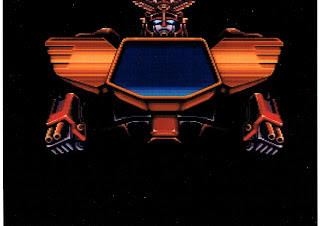written by Molly Heady-Carroll
Cover of Manga “Tokyo Doll Anthology” by Noriko
The Warp Zone Art
Show 2015 is proud to showcase the work of Tokyo-born artist Noriko Aoki (AKA
Tokyo Doll).
From 1992-1995, Noriko worked as a pixel artist for Nintendo, Bandai and Banprest. Specializing in Gameboy and Super Nintendo games, projects under her belt include Fatal Fury 2, Crayon Shin-Chan and Super-Deformed:
The Great Battle, a Japan-exclusive game featuring chibi versions of
popular Japanese heroes Kamen-Rider, Ultraman and Gundam.
Moving on from the tough world of games, Noriko later
became a User Interface Designer for Nokia
Japan. Applying her knowledge of pixel art, she designed icons, animations
and the layouts for the Nokia Asian market.
In 2002 she came to the Netherlands and currently resides in Utrecht with her husband. She now applies her creative talents to manga, art prints and freelance manga portrait drawing.
In 2002 she came to the Netherlands and currently resides in Utrecht with her husband. She now applies her creative talents to manga, art prints and freelance manga portrait drawing.
Unused,
Never-Before Displayed Artwork from “SD:
The Great Battle”. One of Noriko’s rare pieces that will be for sale during the
Warp Zone Art Show 2015
Noriko graciously sat
down with us at Warp Zone and shared
some of her experiences working as a pixel artist in Japan during the early
1990’s. Her answers reveal much about the extreme work ethic and restrictions
the artists were put under when creating artwork for games.
Fatal Fury 2 on
Game Boy, background art by Noriko. Prints of Noriko’s background work will be
available at the Warp Zone Art Show 2015
What are some notable game projects you worked on?
“I worked for two subcontracting companies: One was the subcontractor for (mainly) Bandai, while the other was for Nintendo. In the 90’s, most companies were independent. For example, “Square” and “Enix” were different companies (Now Square Enix), as well as “Bandai” and “Namco” (now Bandai Namco Entertainment).
I worked on games for the Super Nintendo and Gameboy. Most of my projects were mecha and super hero games for Bandai but I also worked on Crayon Shin-chan on the Super Nintendo and Fatal Fury on Gameboy.”
“Crayon Shin-chan - Arashi o Yobu
Enji” on Super Famicom. Noriko was responsible for all sprite work on Masao
(left on path, green shirt)
What was it like working with the hardware of the time when creating pixel art?
“Drawing pixel art requires special techniques that apply a trick of the eye. It's not a ‘piece of cake’.
In my working era, there were no Windows OS. We worked with MS-DOS based computers. The hardware was NEC PC9801, a Japanese computer, connected with a special SCSI that connected to a TV monitor. We drew graphics on the PC while checking the TV monitor because the result on PC screens and TV monitors is different. Red in particular was hard to get right.”
Noriko’s rendition of the computer setup
that pixel artists used in the 90’s
How do you look back on your time working on games?
“Hmmm... There was no time for thinking. My memory is just sitting in front of the computer all the time because the working schedule was mostly from 9:00 to 23:00 including Saturday and Sunday. During the hardest times, we took sleeping bags into the office and continued to work. There were always conflicts between people in this stressful environment. To tell the truth, the company I worked for was practically a sweatshop: they never followed the Labor Standards Act. Not only my ex-companies but also many game and anime companies have the same situation in Japan, even today.
Playing games is fun but working in the games industry is hard. No holiday, low salary, no overtime payment and often working all night long. I quit my games job because my health was being affected by the hard work.”
Storyboard excerpt for the opening cinematic to “SD: The Great Battle” drawn by Noriko. This hand-drawn original storyboard will be on display during the Warp Zone Art Show 2015
What have you been doing since '95?
“After video games I worked a regular job. Through my pixel art experience though, I was eventually employed by Nokia as a User interface designer. At this time, mobile phone graphic were created using pixel art. Nokia work was an easier job with a higher salary than in games. After that I got married to a Dutch guy and moved to the Netherlands. Now I’m back into manga because I was a professional manga-ka before I was a game graphics designer in Japan.”
Is there anything you would like to add? Any interesting stories orprojects you'd like to let the readers know about?
“It's interesting to hear that some young people are interested in pixel art. At the moment I don’t have any game projects but I am creating my own original manga.”
Manga “The Flowers Blooming in
the Sky” by Noriko
Noriko will be just
one of the various Netherlands-based artists exhibiting during the Warp Zone Art Show 2015, invading
Amsterdam September 5th in the Vondelbunker. Visit our blog for more
information on this year’s exciting art show! http://warpzoneamsterdam.blogspot.nl/
Visit this year’s
show and see relics from Noriko’s time working as a pixel artist in Japan. Items
on display include never-before seen storyboards, level layouts and official
company pixel artist reference material. Manga and signed prints by Noriko will
be available during the show, including rare, unused pixel art pieces. Warp Zone the only place in the world
where these pieces are available so be sure to come and see them!
And of course, visit
Noriko’s website for more information on her fantastic manga comics, prints, manga
portraits and other artistic endeavors: http://tokyodoll.web.fc2.com/








No comments:
Post a Comment